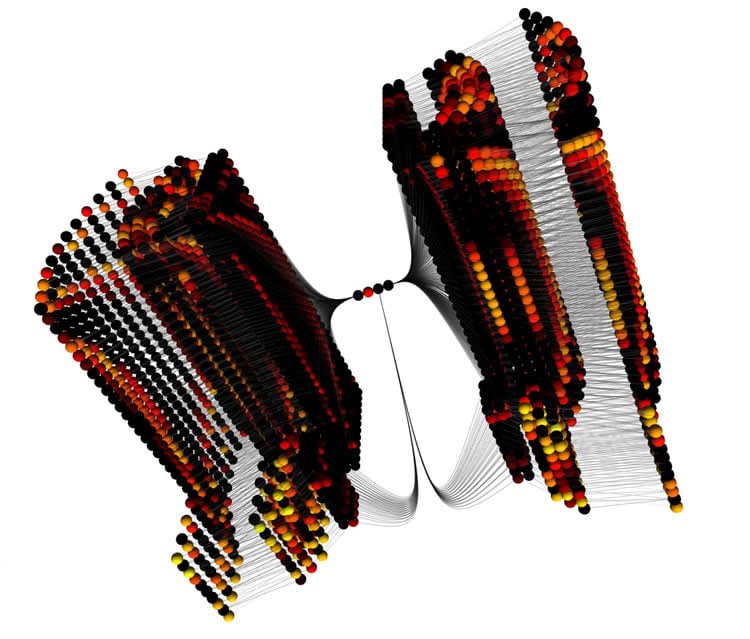Scientists have built a computer model that shows how bees use vision to detect the movement of the world around them and avoid crashing. This research, published in PLOS Computational Biology, is an important step in understanding how the bee brain processes the visual world and will aid the development of robotics.
The study led by Alexander Cope and his coauthors at the University of Sheffield shows how bees estimate the speed of motion, or optic flow, of the visual world around them and use this to control their flight. The model is based on Honeybees as they are excellent navigators and explorers, and use vision extensively in these tasks, despite having a brain of only one million neurons (in comparison to the human brain’s 100 billion).
The model shows how bees are capable of navigating complex environments by using a simple extension to the known neural circuits, within the environment of a virtual world. The model then reproduces the detailed behaviour of real bees by using optic flow to fly down a corridor, and also matches up with how their neurons respond.
This research ultimately shows that how a bee moves determines what features in the world it sees. This explains why bees are confused by windows – since they are transparent they generate hardly any optic flow as bees approach them.

Understanding how bees avoid walls, and what information they can use to navigate, moves us closer to the development of efficient algorithms for navigation and routing – which would greatly enhance the performance of autonomous flying robots.
Funding: Supported by Physical Sciences Research Council.
Source: Alexander Cope – PLOS
Image Source: The image is credited to Cope et al.
Original Research: Full open access research for “A Model for an Angular Velocity-Tuned Motion Detector Accounting for Deviations in the Corridor-Centering Response of the Bee” by Alex J. Cope, Chelsea Sabo, Kevin Gurney, Eleni Vasilaki, and James A. R. Marshall in PLOS Computational Biology. Published online May 5 2016 doi:10.1371/journal.pcbi.1004887
Abstract
A Model for an Angular Velocity-Tuned Motion Detector Accounting for Deviations in the Corridor-Centering Response of the Bee
We present a novel neurally based model for estimating angular velocity (AV) in the bee brain, capable of quantitatively reproducing experimental observations of visual odometry and corridor-centering in free-flying honeybees, including previously unaccounted for manipulations of behaviour. The model is fitted using electrophysiological data, and tested using behavioural data. Based on our model we suggest that the AV response can be considered as an evolutionary extension to the optomotor response. The detector is tested behaviourally in silico with the corridor-centering paradigm, where bees navigate down a corridor with gratings (square wave or sinusoidal) on the walls. When combined with an existing flight control algorithm the detector reproduces the invariance of the average flight path to the spatial frequency and contrast of the gratings, including deviations from perfect centering behaviour as found in the real bee’s behaviour. In addition, the summed response of the detector to a unit distance movement along the corridor is constant for a large range of grating spatial frequencies, demonstrating that the detector can be used as a visual odometer.
“A Model for an Angular Velocity-Tuned Motion Detector Accounting for Deviations in the Corridor-Centering Response of the Bee” by Alex J. Cope, Chelsea Sabo, Kevin Gurney, Eleni Vasilaki, and James A. R. Marshall in PLOS Computational Biology. Published online May 5 2016 doi:10.1371/journal.pcbi.1004887






